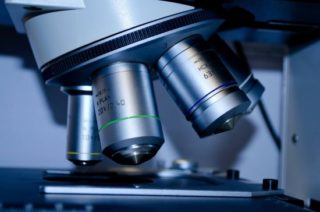At first sight, the professions of medicine and translation appear far removed from one another. But they share at least one significant unifying feature. People often don’t give a thought to the practitioners of either until they are desperately needed. The two working in harmony is desirable, and translation has a great deal to offer to improve the conditions of the medical industry around the world.
Translation agencies tend to offer different levels of service, depending on the audience and intent. Translation with proofreading for materials that are going to be published to a wider audience; standalone translation for internally distributed materials; and sometimes even Machine Translation ‘gisting’ for getting the rough sense of non-critical texts where speed, rather than accuracy, is the order of the day. These gradations of service essentially correspond to how high the stakes are with a particular translation assignment. It’s perfectly normal that these different levels should exist – but for the medical translation industry, the expectations are different, and the stakes are never below maximum intensity. In transmitting the meaning of texts such as those with medical devices, research documents, or pharmaceuticals, a large number of people further down the supply chain are placing their faith in the accuracy of the translator’s work. It might be easy to stray into hyperbole, yet it’s somehow easier to see the potential of medical translation to be life-critical.
For that simple reason, the standards that select those on the job must be beyond the normal levels of stringency.
First and foremost, medical translators must have medical expertise. This criterion is both blindingly obvious and non-negotiable – would you trust a management consultant to perform surgery, or administer the right drugs in safe doses? But beyond this, they must also be bilingual to a native degree of fluency, with a strong command of the appropriate formal registers in the ‘medical dialect’ of the target language – an enigma that one assumes can only be cracked with years of application at med school.
In addition to that, they must be well-versed in translation theory and practice. Given the volumes of medical documents that require translation, it is unrealistic to expect every medical translation to be carried out by a linguistically skilled doctor, especially given the diversity of clinical specializations. Medically knowledgeable linguists must then fill the gap. These intersections of medical training and professional writing skills exist, but finding them requires a great deal of digging for the right person. And when a project on a larger scale requires an outstanding translation team, only a well-organised and well-connected agency can assemble the right people in a matter of days, if not hours. Successful medical translation on a large scale can only be the fruit of collaborative labour, and agencies make that collaboration efficient.
The codes of doctors can seem a language unto itself at times. Cases in point are the acronyms and abbreviations that permeate medical parlance. There are often multiple potential abbreviations for the same item, and sometimes the same abbreviation for multiple items. The scale of the problem increases by a factor of the number of languages targeted for translation.
Henry Fishbach comes up with a helpfully medical analogy to explain the potential pitfalls of the translator’s task.
“Individual words, like individual cells, cover a certain functional area. First, there is the nucleus […], which carries the general meaning of the word; and then there is a circumscribed mass of protoplasm or fringe area, more or less broad, which imparts a certain colour to the word. Seldom will the corresponding words in two different languages cover precisely the same area, core and fringe.”
The translator must remain vigilant to discrepancies arising from denotations of core meanings and connotations of peripheral senses. Medical terminology that denotes one thing in English can very easily connote something additional and unintended in translation – and when that occurs, the job of medical professionals is made that much more difficult.
Concrete examples of disastrous medical translations are thankfully few and far between, and that is a testament to the competence and diligence of most professional linguists. However, horror stories do surface from time to time. In a German hospital between 2006-2007, there were 47 patients who were victims of botched knee operations, after the instruction manual for the prostheses was badly translated! What the original English text called ‘non-modular cemented prostheses’ was (somehow) translated as ‘prostheses that do not require cement’. The consequences of this oversight do not bear description, but the story is a cautionary tale that serves to underline what is at stake.
Medical translation projects are perpetually open books. Even when the project is nominally ‘finished’, the scientific terrain will change. The frequency of medical developments is not just relentless but accelerating, and so archaisms, innovations, and their corresponding coinages in all languages and cultures must be approached dynamically, as evolving entities. The ‘finished job’ is a pipe dream.
The 21st century will probably be something of a golden age for medical sciences. Humans will be able to enjoy longer, healthier, more fruitful lives, as the breakthroughs against all manner of debilitating diseases begin to stack up. Yet these transformative research breakthroughs can only achieve their full potential if they are unfettered – and that means language services have a vital role to play. Scientists and doctors have the messages that matter to humanity – but they’ll always need translators to ferry them across cultures.

